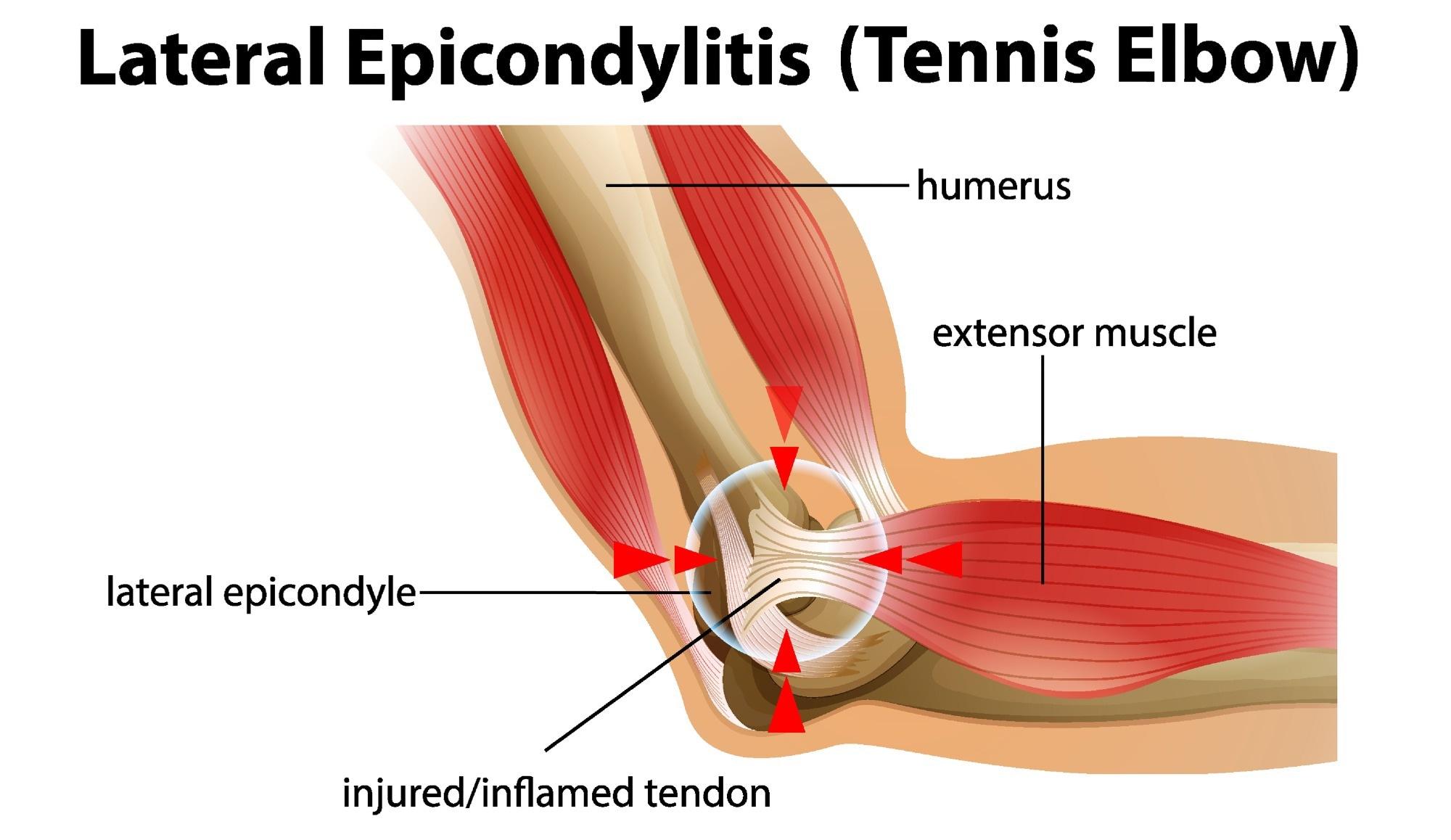Tennis Elbow

Overview
Tennis elbow, clinically referred to as lateral epicondylitis, is a common condition related to overuse of the arm and forearm muscles. Although its moniker might suggest otherwise, this condition isn’t limited to tennis players. In fact, anyone who repeatedly uses their elbows, wrists, and hands in their activities or work can develop tennis elbow. Estimates suggest that about 1 to 3% of the population suffers from tennis elbow, with those between the ages of 30 and 50 being most prone to it.
Types
Not all elbow pains are tennis elbow. There’s another condition called golfer’s elbow or medial epicondylitis, which affects the tendons on the inside of the elbow, while tennis elbow impacts the outside. While both conditions are the result of overuse and repetitive motion, they affect different areas and tendons of the elbow joint.
Causes
Despite the name, tennis elbow doesn’t solely affect tennis players. The condition arises from the repetitive contraction of the forearm muscles used to straighten and raise your hand and wrist. The repeated motion and stress to the tissue may lead to a series of small tears in the tendons that attach the forearm muscles to the bony prominence at the outside of your elbow. Risk factors include age, certain sports, and specific jobs that include repetitive motions of the wrist and arm.
Symptoms
The symptoms of tennis elbow develop gradually, starting with mild discomfort during use of the affected arm that progressively worsens over weeks to months. Common symptoms can include:
-
- Pain or burning on the outer part of your elbow
-
- Weak grip strength
-
- Difficulty holding onto, gripping, and lifting objects
Diagnosis
Your healthcare provider can typically diagnose tennis elbow through a physical exam. You’ll discuss your symptoms and medical history, followed by a series of exercises to check pain location, grip strength, and range of motion. In rare cases, imaging tests such as X-rays or MRIs may be ordered to rule out other conditions.
Treatment Options
Most often, tennis elbow pain resolves on its own with rest and over-the-counter pain relievers. When it doesn’t, treatment options can include:
-
- Physical Therapy: Strengthening your forearm muscles can ease the pressure on the tendons and alleviate symptoms.
-
- Braces: Using a brace centered over the back of your forearm can also help relieve symptoms.
-
- Steroid Injections: If the previous methods do not work, your healthcare provider may recommend steroid injections to reduce inflammation.
-
- Surgery: If your symptoms persist for more than six months to a year, surgical options might be considered by your healthcare provider.
Living With Tennis Elbow
Understanding how to manage tennis elbow in daily life can greatly improve your comfort and recovery. Here are some practical tips:
-
- Rest: Give your elbow a break from any repetitive tasks as often as possible.
-
- Ice: Regularly applying ice to the elbow can help reduce inflammation and pain.
-
- Pain Relief: Over-the-counter pain relievers such as Ibuprofen can help with pain management.
-
- Exercise: Engage in strengthening exercises and stretches to help prevent tennis elbow from recurring.
When to Seek Help
While tennis elbow often heals on its own, it’s important to consult your healthcare provider if you notice the following:
-
- Persistent pain despite rest and home treatment
-
- Decreased range of motion in the elbow
-
- Pain that spreads to other parts of the arm
-
- Pain when lifting light objects
Don’t ignore the signs your body is sending you. Early treatment can prevent tennis elbow from becoming a chronic problem.
